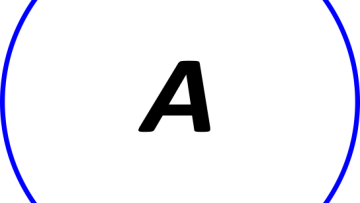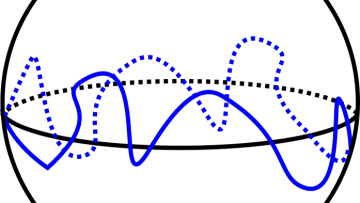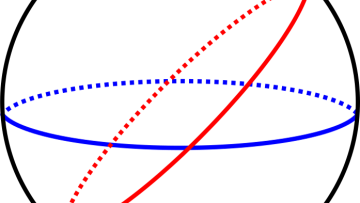Re-Engineering History: A Playful Demonstration
Abstract
This session will discuss how Douglas Hartree and Arthur Porter used Meccano — a child’s toy and an engineer’s tool — to build an analogue computer, the Hartree Differential Analyser in 1934. It will explore the wider historical and social context in which this model computer was rooted, before providing an opportunity to engage with the experiential aspects of the 'Kent Machine,' a historically reproduced version of Hartree and Porter's original model, which is also made from Meccano.
The 'Kent Machine' sits at a unique intersection of historical research and educational engagement, providing an alternative way of teaching STEM subjects, via a historic hands-on method. The session builds on the work and ideas expressed in Otto Sibum's reconstruction of James Joule's 'Paddle Wheel' apparatus, inviting attendees to physically re-enact the mathematical processes of mechanical integration to see how this type of analogue computer functioned in reality. The session will provide an alternative context of the history of computing by exploring the tacit knowledge that is required to reproduce and demonstrate the machine, and how it sits at the intersection between amateur and professional science.
12:00
Aspects of Scattering Amplitudes and Moduli Space Localization
Abstract
It has been long known that intersection theory on the moduli space of punctured Riemann surfaces encodes observables in two-dimensional quantum gravity. It is natural to ask whether interacting theories could also admit a similar description. In the genus-zero case we put forward a twisted version of intersection theory on the moduli space and propose that it computes tree-level scattering amplitudes in a range of quantum field theories with a finite spectrum of particles. The resulting intersection numbers exhibit two alternative kinds of localization formulae. The first one receives contributions only from boundaries of the moduli space, thus leading to a Feynman diagram expansion, while the second one localizes on critical points of a certain Morse function.
14:30
Finite Element Methods for Intrinsic Geometric Flows
Abstract
Partial differential equations governing unknown or evolving geometries are ubiquitous in applications and challenging to discretize. A great deal of numerical work in this area has focused on extrinsic geometric flows, where the evolving geometry is a curve or surface embedded in Euclidean space. Much less attention has been paid to the discretization of intrinsic geometric flows, where the evolving geometry is described by a Riemannian metric. This talk will present finite element discretizations of such flows.
A motivic DT/PT correspondence via Quot schemes
Abstract
Donaldson-Thomas invariants of a Calabi-Yau 3-fold Y are related to Pandharipande-Thomas invariants via a wall-crossing formula known as the DT/PT correspondence, proved by Bridgeland and Toda. The same relation holds for the “local invariants”, those encoding the contribution of a fixed smooth curve in Y. We show how to lift the local DT/PT correspondence to the motivic level and provide an explicit formula for the local motivic invariants, exploiting the critical structure on certain Quot schemes acting as our local models. Our strategy is parallel to the one used by Behrend, Bryan and Szendroi in their definition and computation of degree zero motivic DT invariants. If time permits, we discuss a further (conjectural) cohomological upgrade of the local DT/PT correspondence.
Joint work with Ben Davison.
D-modules in logarithmic geometry
Abstract
Given a smooth variety X with a normal crossings divisor D (or more generally a smooth log variety) we consider the ring of logarithmic differential operators: the subring of differential operators on X generated by vector fields tangent to D. Modules over this ring are called logarithmic D-modules and generalize the classical theory of regular meromorphic connections. They arise naturally when considering compactifications.
We will discuss which parts of the theory of D-modules generalize to the logarithmic setting and how to overcome new challenges arising from the logarithmic structure. In particular, we will define holonomicity for log D-modules and state a conjectural extension of the famous Riemann-Hilbert correspondence. This talk will be very example-focused and will not require any previous knowledge of D-modules or logarithmic geometry. This is joint work with Mattia Talpo.
Minimal Lagrangians are key objects in geometry, with many connections ranging from classical problems through to modern theoretical physics, but where and how do we find them? Oxford Mathematician Jason Lotay describes some of his research on these questions.
"A classical problem in geometry going back at least to Ancient Greece is the so-called isoperimetric problem: what is the shortest curve in the plane enclosing a given area A? The answer is a circle:
Stability conditions and spectral networks
Abstract
Stability conditions on triangulated categories were introduced by Bridgeland, based on ideas from string theory. Conjecturally, they control existence of solutions to the deformed Hermitian Yang-Mills equation and the special Lagrangian equation (on the A-side and B-side of mirror symmetry, respectively). I will focus on the symplectic side and sketch a program which replaces special Lagrangians by "spectral networks", certain graphs enhanced with algebraic data. Based on joint work in progress with Katzarkov, Konstevich, Pandit, and Simpson.





